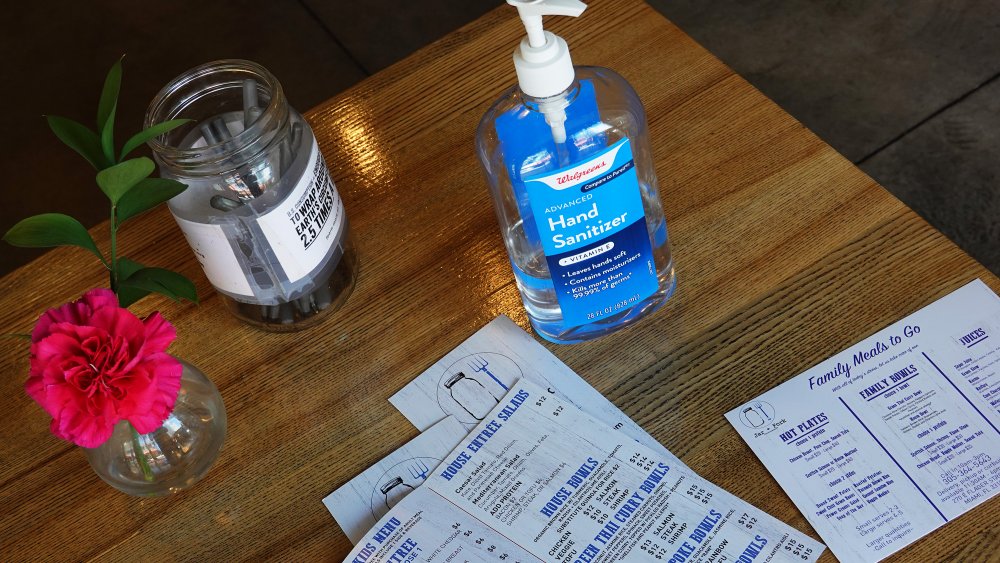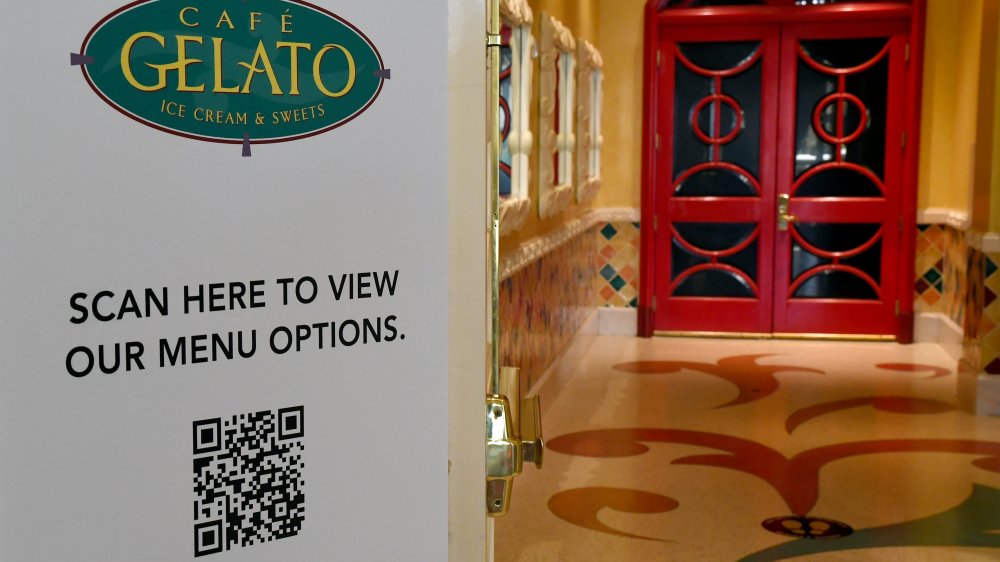The Real Reason Restaurants Are Doing Away With Menus
With the worst of the COVID-19 pandemic behind us (hopefully), restaurants and other businesses are reopening across the U.S. But this doesn't mean business as usual. As the nation tries to restart its economy and rediscover the simple pleasures of dining out, officials in government and the restaurant industry also want to keep employees and customers safe.
People returning to restaurants are seeing a lot of changes intended to reduce the spread of COVID-19, even as people start to gather together again. Restaurants are setting fewer tables, separating them with plexiglas barriers, and asking servers to wear facemasks. In addition to safety, tight budgets are also a concern, so some restaurants are offering fewer items on their menus (via Marketplace).
Speaking of menus, reopening guidelines published by the National Restaurant Association call for wiping down menus after each use, or throwing away paper menus after a single use. These measures, while important for everyone's safety, cost time and money. That's why menus are a thing of the past at some restaurants, and an old internet technology — the QR code — is new again.
QR codes are a sign of the COVID-19 times
Arguably, nothing in a restaurant is touched by more hands than those laminated menus. Diners grab them from a common stack in the reception area or take their menus from a server who has touched dozens of them already. The CDC reports that it's possible that people can be infected by COVID-19 by touching a surface that carries the virus. The QR code, on the other hand, has made perusing the menu touch-free and has been adopted in restaurant chains such as Ruth's Chris Steak House (via FSR Magazine) and by the high-end Ralph's on the Park in New Orleans (via nola.com).
QR code menus are easy to use. Most smartphones activate them through their cameras. After the camera recognizes the code, a pdf version of the menu is a click away. In addition to being safer, QR codes save restaurants money. A Montana establishment that printed single-use menus is saving more than $1,000 after converting to the QR code (via Eat This, Not That!).
The QR code was devised back in 1994, when the internet was only connected to 2 million computers worldwide (via Syracuse.com). Back then, it wasn't really an internet feature, but rather just a barcode on steroids (via Mobile-QR-Codes.org). A quarter-century later, QR codes are having a revival, thanks in part to COVID-19. In addition to replacing the restaurant menu, QR codes are being used in Singapore and China to facilitate contact tracings of people infected with the disease (via Beaconstac).

